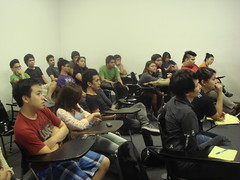You may have seen these lenses on BMW’s, Mercedes, Audi’s and Ashton Martin’s while enjoying 007 Bond films and other popular films. They look weird and amazing like this one below a 7.6 surround set-up with the TV as the centre channel. Each BeoLab 5’s carry a massive power output of 2500 watts of Class D-amplification technology. Four speakers 2x 1000 watts low sub and high sub 1x 250 watts mid and 1x 250 watts high using acoustic lenses.
Well, these speakers have acoustic lenses, a technology based on circles and ellipses and how sound waves can be controlled using aluminium lenses.
Usually, to get in the sweet spot, one has to be in the middle of the left and right stereo speaker position e.g. mixing or mastering audio or even just listening in order to enjoy the balance of the sound and realize the movement of the music in the stereo field. The very thing that these acoustic lenses are here for is that they expand the “sweet spot” instead of 60 degrees it’s times 3 based on the papers written about acoustic lenses. Meaning in order to enjoy the sound or music one need not be in the same center position of two loudspeakers with equilateral distances creating a 60 degrees angle (30 left and 30 right) and having to hear a phantom image at the center. With the acoustic lenses, anywhere you are in the room you will still be on the sweet spot so to speak because the acoustic lenses spreads the audio 180 degrees (high and mid frequencies) . Not worry about the sub frequencies coz as we know sub or low frequencies are omni-directional anyway. Simply means the acoustic lenses helps expands the sweet spot spreading the high and mid to 180 degrees in the room. More than a decade old research by Sausalito Audio…
According to Robert Archer of CEPro
The “Acoustic Lens”
Originally conceived by Moulton, Sausalito Audio’s Acoustic Lens solution was developed by LaCarrubba for architectural loudspeakers.
Now, Sausalito is working to leverage that technology.
The Acoustic Lens technology has already been successfully implemented in Bang & Olufsen’s line of freestanding loudspeakers and audio systems designed for Audi and Aston Martin automobiles.
The Acoustic Lens acts like a wave guide and horn, says Wertman. In traditional speaker designs, she says, treble sounds beam. They also create what she calls “undesirable floor and ceiling reflections.”
“Traditional off-axis lateral treble performance is generally poor and, though many companies have tried to solve the problem, the Acoustic Lens is the device that best addresses it,” she says.
The Acoustic Lens takes vertical radiation and flattens it to achieve an even, 180-degree horizontal dispersion, Wertman explains.
“The difference in audio performance is not only measurable, but it’s easily discernable to average listeners,” she says.
The widening of the so-called “sweet spot,” the Acoustic Lens is especially valuable to custom installers, says Wertman, helping them overcome common compromises.
I have personally heard this with my ears, Bang & Olufsen’s BeoLab speakers the BeoLab 18, BeoLab 20’s as well as the BeoLab 5’s and BeoLab 3’s all these award winning speakers from the International CES have the same expanded sound on the highs and their mid-ranges. On top of that, the waves are controlled to have less reflections from the ceilings and the floor (or horizontally and vertically) giving a balanced expanded throw from the speakers.
I wouldn’t recommend it for studio work of course but for in car audio systems and for hi-fi listening they are great, well they are the best. And tuning your speakers in the living room would be very easy … so much easier than you think. What I have tried was using the TV (BeoVision Avant 55″) as a centre channel in a 5.3 surround set-up with my left and right front speakers (BeoLab 18’s Award Winning CES Best of Innovations, Design and Performance speakers for 2014) an added BeoLab 19 Sub-woofer (wireless using WiSA Technology) and BeoLab 17’s for the left and right surround speaker set-up. It’s just amazing and people are blown away by the sound distribution across the room. Not mentioning the WiSA Wireless Technology Streaming from the TV to all the 5.3 surround set-up which is better than CD quality. CD is 16-bit 44kHz from a player and WiSA is Immaculate Wireless Sound from B&O streaming audio at 24-bit 48kHz (high-definition audio).
Wait… wait… wait… are you saying 5.3 surround? well, where’s the other 2 coming from ? I mean the 0.2 coming from? hmmm… good question.
Well, the answer is that the TV itself (BeoVision Avant 55″) is the only TV in the market with 4K Technology, 2D/3D dimming, carrying a built-in 8 loudspeakers all active with class-D ICEPower amplification technology. the TV alone is in itself a 3.2 channel sound system (1x 6.5 inches sub omni and 1x 4 inches sub front with 3 mid ranges and 3 tweeters all active). So, setting the TV a 1.2 (center and 2 subs) plus the Wireless Speakers left front, right front, 1x wireless sub, left surround and right surround makes a 5.3 surround set-up. Just crazy. Levels can be selected and adjusted in dB’s, speaker distances can be manipulated as well, and many more. The BeoVision Avant is the 2015 CES International Best of Innovations Award Winning Television from 4k Ultra High Definition Picture to Iconic Sound and Choreographed movement with proper aluminium finishes and not plastic painted with silver with flimsy stand, this got a 65 kgs. motorized floor stand with a full circuit board on it giving you the total positioning and experience as well as choreographed movement. Sorry, not trying to sell you a TV here but it’s mind blowing how these technologies have evolved through time. If you want full range sound with a very good mid presence stay away from the cheap high and low boosted speaker systems that don’t have proper mid-ranges and that costs you around 1,500 pounds to 3,500 pounds with all the clutter of wires. You will just be buying a system with NO MIDs at all … all you get is ssssssss… and boom boom boom…
A lot of consumers don’t know these facts and that’s why Bang & Olufsen always have the impression of having to be expensive. Well, acoustic research and technology is not cheap. Scientific study and engineering technology is not cheap to translate into products at all. And I would stand by Bang & Olufsen why their products have to be priced as such because of the translated technology and research as well as the design they employ to their manufacturing of high-end speaker systems and video systems. If you want quality then that has to be seen, that has to be felt, and that has to be experienced.








